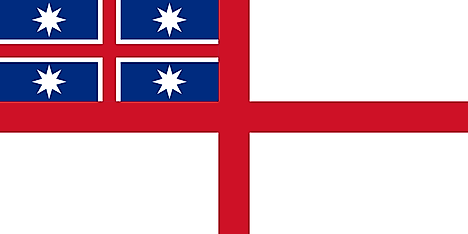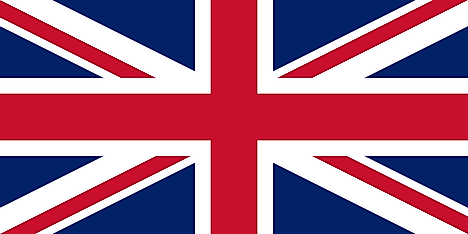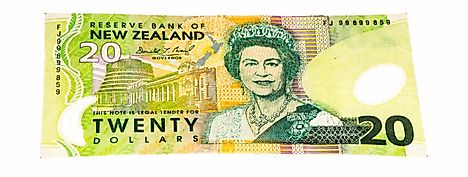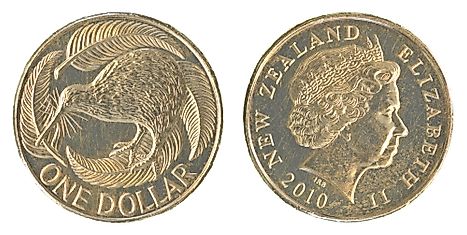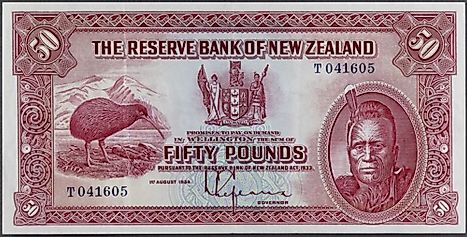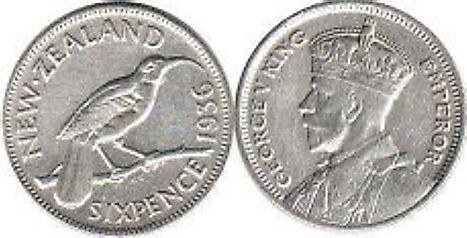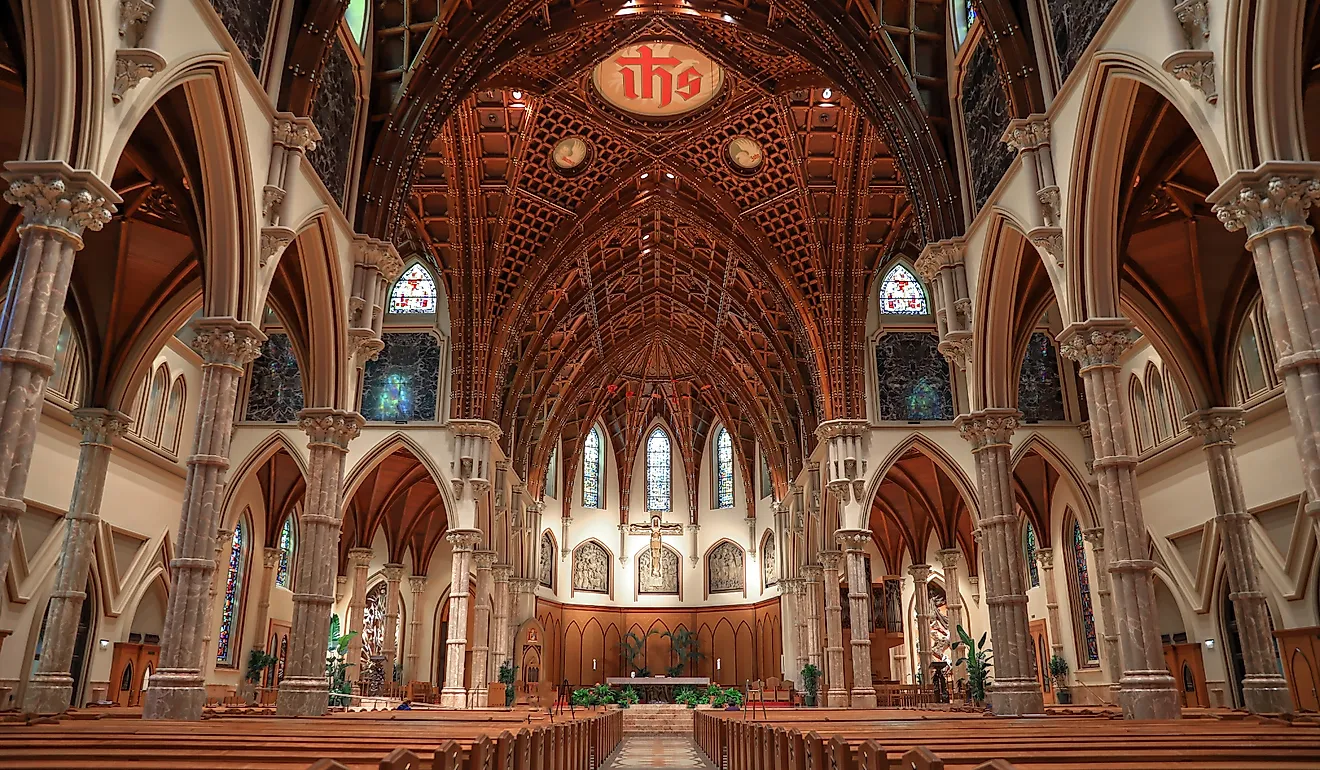Flags, Symbols, & Currencies of New Zealand
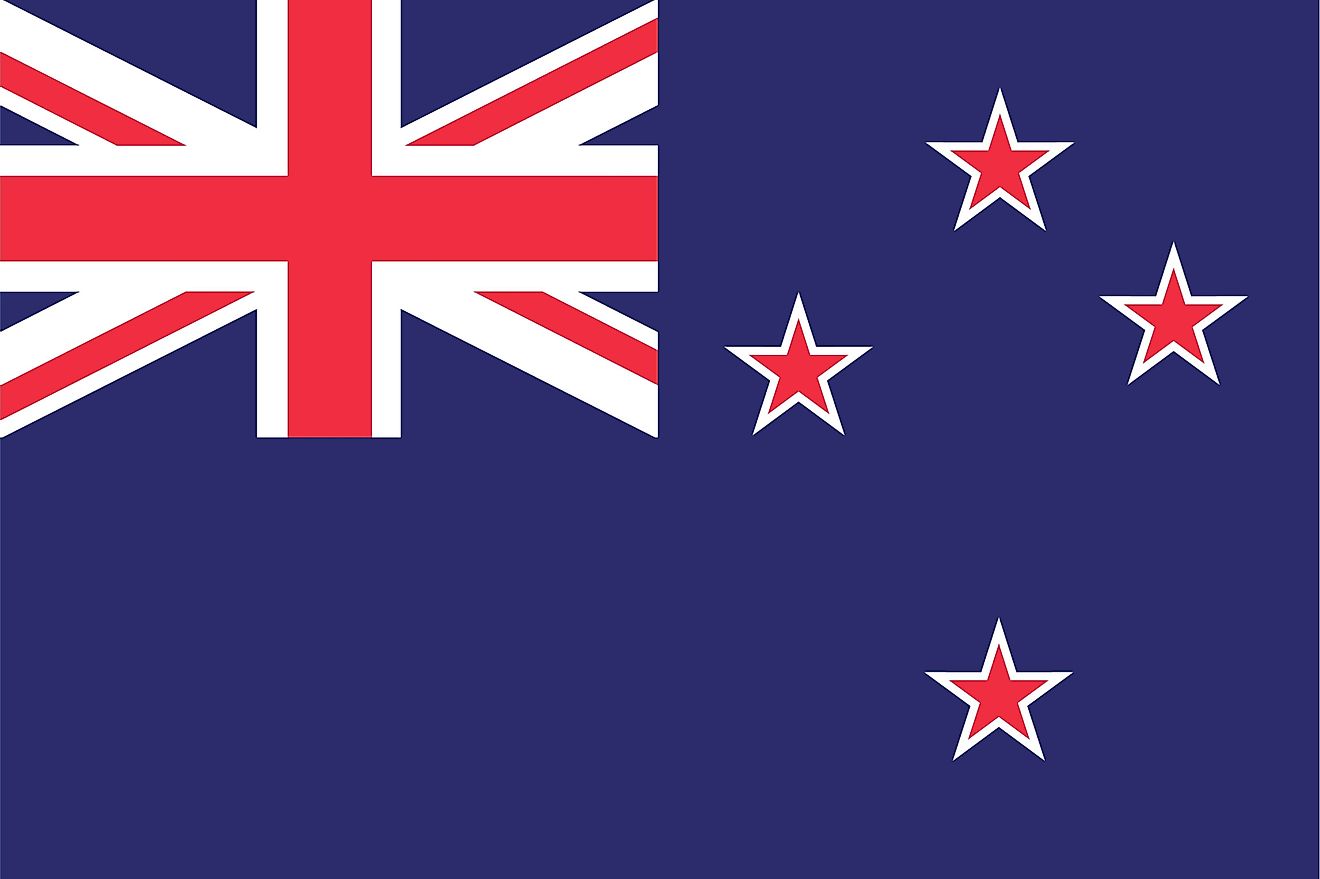
The Pacific Ocean island country of New Zealand adopted its national flag and state ensign on March 24, 1902. Albert Hastings Markham, the Royal Navy’s First Lieutenant, designed the New Zealand flag in 1869, and its use began the same year. The official adoption came after King Edward VII approved the Ensigns and Code Signals Bill in March 1902.
New Zealand’s national flag’s design is a defaced British Blue Ensign and has the national flag of Great Britain at the canton. On the flag’s fly, there is a pattern of stars representing the Southern Cross in the Crux constellation. The flag’s proportion is 1:2, with three colors: red, blue, and white. The 1902 flag is a symbol for the people of New Zealand, its Realm, and the Government. The Union Jack at the canton represents the close relationship between New Zealand and the United Kingdom, as well as New Zealand’s past as a colony of Great Britain. The Southern Cross shows the South Pacific Ocean location of the country. The color blue represents the sky and the sea.
History of Flags in New Zealand
James Busby, a British resident, convened a meeting of Maori chiefs to vote for New Zealand’s first flag at Waitangi. The United Tribes of New Zealand rejected two of three flags designed and proposed by Henry Williams. On March 1834, the confederation voted and adopted a flag with two crosses of St. George, one in a blue background canton bearing four eight-pointed stars. This flag became the Flag of the United Tribes of New Zealand, with its use ending in 1840. From 1840 up to 1867, the country used the British Union Flag, after signing the Treaty of Waitangi. The Colonial Navy Defense Act 1865 led to an introduction of a New Zealand flag in 1867 based on the British Blue Ensign bearing the initials “NZ” in the fly, with its use up to 1869. Use of the current flag began in 1869, but official adoption occurred in 1902.
Change of the Flag of New Zealand
New Zealand has over several decades had debates on changing its national flag. During their national conference, the Labor Party voted down a remit seeking to alter the flag on May 1973. The Internal Affairs Minister in New Zealand proposed a flag bearing a silver fern on its fly on November 1979, receiving little support. Another move came in 1998. New Zealand’s Prime Minister announced a plan for two referendums on March 11, 2014, to determine the adoption of a new flag. The first referendum sought to choose a new flag from five choices. The winning flag lost to the current one in the second referendum, which had 67.3% being its voter turnout. 56.7% of the voters chose to retain their national flag while 43.3% wanted a change.
Rules Concerning the Flag
The law permits the use of the New Zealand national flag officially on vehicles of the Prime Minister, Government Ministers, High Commissioners, and Ambassadors of New Zealand. When using multiple poles, the national flag flies on the left followed by the National Maori flag. The law forbids the display of old flags and permits destruction by burning, which should not be in public. When flying at half-mast, the National Flag of New Zealand should always be above any other flag.
Symbols of New Zealand
National Coat of Arms of New Zealand
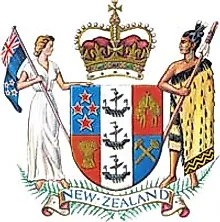
The New Zealand Coat of Arms features four shields. The first quarter of the shield portrays four stars representing the Southern Cross, the second quarter shows a fleece which represents the farming industry, the wheat sheaf in the third quarter is a tribute to the agricultural industry and the last, (fourth) quarter with the crossed hammers recognizes the mining industry. The three ships in the center of the shield symbolize the sea trade. On either side of the shield is a supporter - on the right is a Maori Chieftain holding a taiaha (Maori war weapon) and the figure on the left is a European woman holding the New Zealand ensign. The Royal Warrant of 1911 gave the formal description, but by mid-1940's, there were at least 20 versions of the original design in use. The current Coat of Arms was standardized in 1956. The principal alterations were in the crest (St. Edward's Crown symbolizing the fact that the Queen is Queen of New Zealand), the four quarters in the shield were redrawn, the two supporters were redrawn facing inwards, a scroll was replaced by the two fern leaves and the name "New Zealand" was added.
National Anthem
- Anthem Title: "God Save the Queen" and God Defend New Zealand"
- Music composer: God Save the Queen (Unknown) God Defend New Zealand (John Joseph Woods)
- Lyricist: God Save the Queen (Unknown) God Defend New Zealand (Thomas Bracken)
- Date of Adoption: God Save the Queen (1841) God Defend New Zealand (1977)
New Zealand is one of the only two countries in the world with two official national anthems (Denmark is the other country). The two national anthems are "God Save the Queen" (UK's official anthem) and "God Defend New Zealand." Although the two anthems have equal status, "God Defend New Zealand" is commonly used when the focus is New Zealand's national identity.
New Zealand adopted "God Save the Queen" in 1841, upon becoming a British colony. It was the country's sole national anthem until 1977. The anthem's writer and composer is unknown, but often attributed to John Bull. God Defend New Zealand was officially adopted on November 21, 1977. It was written in 1870s by Thomas Bracken and set to the melody of the Presbyterian hymn, "Raise Up Our Souls, Oh Lord." The anthem was translated to a Maori Thomas Henri Smith in 1878.
God Save the Queen
God save our gracious Queen!
Long live our noble Queen!
God save the Queen!
Send her victorious,
Happy and glorious,
Long to reign over us:
God save the Queen!
O Lord our God arise,
Scatter her enemies,
And make them fall:
Confound their politics,
Frustrate their knavish tricks,
On Thee our hopes we fix:
God save us all.
Thy choicest gifts in store,
On her be pleased to pour;
Long may she reign:
May she defend our laws,
And ever give us cause,
To sing with heart and voice,
God save the Queen!
God Defend New Zealand
God of Nations at Thy feet,
In the bonds of love we meet,
Hear our voices, we entreat,
God defend our free land.
Guard Pacific's triple star
From the shafts of strife and war,
Make her praises heard afar,
God defend New Zealand.
Men of every creed and race,
Gather here before Thy face,
Asking Thee to bless this place,
God defend our free land.
From dissension, envy, hate,A
nd corruption guard our state,
Make our country good and great,
God defend New Zealand.
Peace, not war, shall be our boast,
But, should foes assail our coast,
Make us then a mighty host,
God defend our free land.
Lord of battles in Thy might,
Put our enemies to flight,
Let our cause be just and right,
God defend New Zealand.
Let our love for Thee increase,
May Thy blessings never cease,
Give us plenty, give us peace,
God defend our free land.
From dishonour and from shame,
Guard our country's spotless name,
Crown her with immortal fame,
God defend New Zealand.
May our mountains ever be
Freedom's ramparts on the sea,
Make us faithful unto Thee,
God defend our free land.
Guide her in the nations' van,
Preaching love and truth to man,
Working out Thy glorious plan,
God defend New Zealand.
The Currency of New Zealand is the New Zealand Dollar
The New Zealand Dollar is the legal tender and official currency in New Zealand and is also known by its code, NZD. The currency is abbreviated by the sign “$” but is commonly abbreviated as “NZ$” to distinguish it from other dollar currencies of the world. The New Zealand Dollar is made up of 100 subunits known as cents (abbreviated as “c”). The New Zealand Dollar was introduced in 1967 as a replacement of the colonial New Zealand Pound as the country decimalized its currency through the passage of the “Decimal Currency Act” of 1964. The New Zealand Dollar replaced the New Zealand pound at the rate of 1 New Zealand Pound: 2 New Zealand Dollars. The currency is pegged to the US Dollar with its rate during issuance being 1 NZ$: 1.43 USD but this rate was later revised to 1 NZ$: 1.12 USD.
Coins and Banknotes
The issuance, inflation, and circulation of the New Zealand Dollar are regulated by the Reserve Bank of New Zealand (RBNZ). The RBNZ issues the currency in coinage and banknotes under numerous denominations with the highest being $100 banknote and the least being the 10c coin. The coinage is issued in 10c, 20c, 50c, $1, and $2 denominations while the banknotes are issued in $5, $10, $20, $50, and $100 denominations.
Historical Currencies of New Zealand
In 1841, New Zealand officially came under British colonial rule after the London-based imperial government issued the “Charter for Erecting the Colony of New Zealand” on November 16, 1840. The charter called for the withdrawal of New Zealand from the larger British colony of New South Wales. The New Zealand Pound was the official currency used in the Colony of New Zealand.
The New Zealand Pound was introduced in the New Zealand economy in 1840 and went by the code NZP in the foreign money markets. The New Zealand Pound was similar to the British pound as it was made up of subunits known as shillings (abbreviated as “s”) where one New Zealand Pound was equivalent to 20 shillings. The shilling was made up of 12 pence (abbreviated as “d”).
New Zealand Pound Coins and Banknotes
The New Zealand Pound was issued in banknotes as well as in coinage. The Great Depression which hit the global economy in the 1930s had a devastating effect on New Zealand’s exports, particularly to the United Kingdom which forced financial institutions in Australia to devalue the New Zealand Pound in relation to the sterling pound. The devaluation of the currency saw the colony mint its own distinct coinage in 1933. The coinage issued by the Reserve Bank of New Zealand was struck in one, two, and two-and-a-half shillings as well as one half, one, three, and six pence denominations. The coinage was initially minted on silver coins, then later in cupro-nickel coins with one and a half pence coins being struck on bronze coins in 1940. The colony also minted commemorative coinage with the first being issued in 1935 to commemorate the Treaty of Waitangi and later in 1953 to commemorate the coronation of Queen Elizabeth II. The New Zealand Pound was also issued in banknotes with 50-, 10-, 5-, 1-pound and 10-shilling denomination banknotes being issued.
